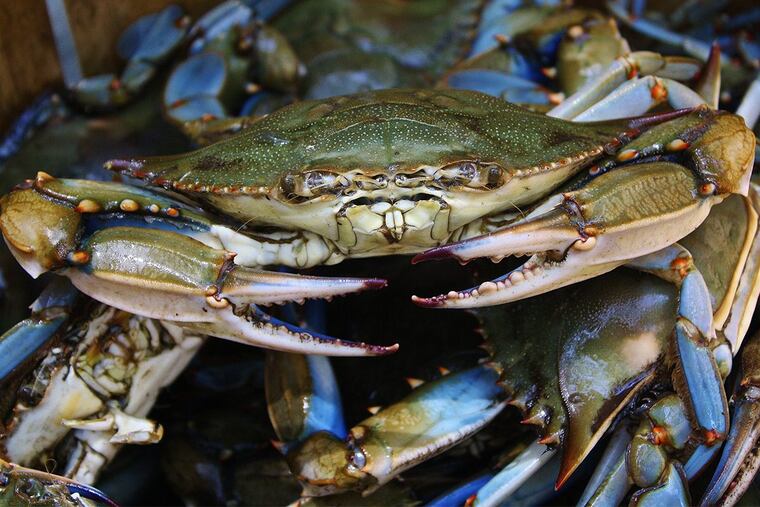Penn State researchers use crab shells, wood to make eco-friendly packaging
Professor has applied for a patent on a new coating that could replace some plastics for use in packaging and potentially save millions of pounds of waste from going into landfills.

Could that Jersey crab claw you just tossed in the trash someday become a basic component of a biodegradable restaurant takeout container?
Jeffrey Catchmark believes so. The professor of agricultural and biological engineering in Pennsylvania State University's College of Agricultural Sciences has applied for a patent on a coating he says could replace some plastics for use in packaging and save millions of pounds of waste from going into landfills.
His team of researchers believes it has come up with an eco-friendly process that would combine cellulose, the basic building block of trees, and chitosan, derived from the exoskeletons of crustaceans such as crabs and shrimp.
The belief is that it could also be used as a component of an edible, highly fibrous food product. Word is still out on the taste.
Catchmark, who recently published his findings in the peer-reviewed Green Chemistry journal, said his goal was to find a cost-effective, environmentally conscious way to replace plastic coatings used in packaging and other products.
"The challenge is, to do that you've got to be able to do it in a way that is manufacturable, and it has to be less expensive than plastic," Catchmark said. "Because when you make a change to something that is greener or sustainable, you really have to pay for the switch. So it has to be less expensive in order for companies to actually gain something from it. This creates a problem for sustainable materials — an inertia that has to be overcome with a lower cost."
So his team, which included Snehasish Basu, a postdoctoral scholar, and Adam Plucinski, an engineering instructor at Penn State Altoona, came up with the cheap, compostable biomaterial.
Catchmark said in a Penn State article on the subject that the material could become a water-resistant food packaging used to seal in freshness or as a coating for ceiling tiles and wallboard.
"And the technology has the potential to be incorporated into foods to reduce fat uptake during frying and maintain crispness," he said. "Since the coating is essentially fiber-based, it is a means of adding fiber to diets."
The chemistry behind it: a surprisingly "sturdy and durable bond" between carboxymethyl cellulose pulp from wood or cotton and chitosan, two cheap polysaccharides, or long-chains of carbohydrates, already used in industry. The bonds lock tightly together.
Catchmark says the material could replace millions of tons of petroleum-based plastic associated with food packaging used every year in the United States and abroad. He said half the 29 million tons a year of plastics that goes into municipal solid waste streams comes from plastic packaging. Further, he says, 10 percent of all plastic produced globally will become ocean debris.
The coating performed well in research. The team took paperboard supplied by Tennessee-based Southern Champion Tray — manufacturer of food packaging, such as doughnut and pizza boxes, takeout containers, and other food and drink carriers — and coated it with the new material.
Southern Champion Tray specializes in paperboard — thicker than regular paper, but thinner than cardboard. It is easily recycled and comes from renewable sources, such as managed tree farms.
The Penn State group's material exhibited strong oil and water barrier properties, according to the research. The researchers coated paperboard with their "polysaccharide polyetectrolyte complexes" and demonstrated they can act as a moisture barrier, though the material is not completely waterproof.
"These results show that PPC-based materials may be competitive barrier alternatives to synthetic polymers for many volume commercial applications," says their research, published in Green Chemistry.
Catchmark began experimenting a decade ago with sustainable biomaterials, including cellulose. He hopes to find commercial partners with this new material.
"We are trying to take the last step now and make a real impact on the world and get industry people to stop using plastics and instead use these natural materials," he said.
The U.S. Department of Agriculture also helped fund some of his research.